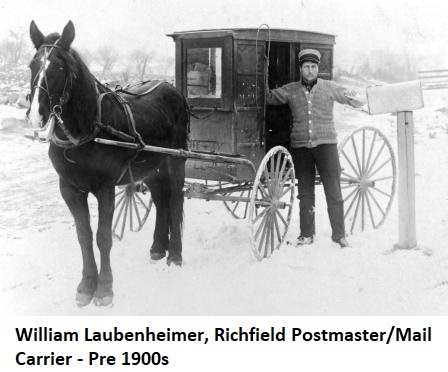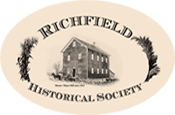Mail Delivery
Send Me a Letter
Today, most of us press a button on our cell phones, type an email or text a message to…almost anyone. Things were different in the mid-to-late 1800s. Let’s take a look at mailing that letter.
In 1863, postage was 2¢ per half ounce. We might think, “What a deal!” By today’s standards, it was. In 1863, however, for a wage earner bringing home $20 per month, or 90¢ per day, that was a lot of money. Since 1863, all domestic letter rates have been “uniform,” that is, based on weight, regardless of distance of travel from sender to recipient.
Postal patrons took their letters to the post office; in-coming mail was delivered to postal boxes in post offices. Long lines at the post offices often resulted with people arriving to pick up their mail. To reward their patience for standing in line, they often found empty mail boxes, not even ‘junk mail’ as most advertisements ran in the local newspapers. Some cities charged customers an extra two-cent fee for letter delivery, or customers could use private delivery firms. In 1863, free city delivery began in 49 major U.S. cities. Unfortunately for rural customers, delivery to farms and businesses outside of the city did not start until the 1890s.
Free city delivery initially had its own process: hand-delivery of mail to customers. If a customer did not answer the carrier’s knock, ring, shout, or whistle, the mail was carried until it could be redelivered when the customer was home. By 1912, new customers were required to provide mail slots or receptacles, and postmasters were urged to encourage existing customers to provide them as well. Imagine letter carriers spending 30 minutes to an hour each day (circa 1914) waiting at doors when attempting person-to-person delivery
“May I borrow one of your self-sticking envelopes?” We buy them today in various sizes. We insert our letters or checks and use the ‘lift & press’ closure. No licking the envelope. No making the envelope. Making the envelope? Before 1830, if people had time, they could make handmade envelopes. Or, they could fold their letters and seal them with messy wax. In the 1840s, small hand-crafted envelope businesses started. The crafter would stack 25 sheets of paper, place a stencil on top, and cut out the envelopes by hand with a pocket knife. These were folded and glued by hand, leaving the open edge unglued. The letter sender would seal the end with sealing wax.
How did mail get from ‘point A’ to ‘point B’? We’re all familiar with stage coaches which carried passengers, strong boxes containing currency and legal documents, and U.S. mail. Depending upon where the mail originated, other delivery methods were employed: steamships, Pony Express, trains, electric automobiles (1899, NY), motorcycles, airmail (the first authorized U.S. Mail flight occurred in 1911, NY), and underground pneumatic tubes.
The Richfield Post Office was known to have existed as early as 1854 with Bertram Schwartz being the postmaster.  William Laubenheimer, the postmaster in 1878, 1881 and 1896 stated in a newspaper interview that the postmen had to be “quite clever”. A letter addressed “Wisconsin Territory North Woods U.S.A.” got to the correct recipient. In 1873, there was a post office at Lake Five. The postmaster was M. Higgins.
William Laubenheimer, the postmaster in 1878, 1881 and 1896 stated in a newspaper interview that the postmen had to be “quite clever”. A letter addressed “Wisconsin Territory North Woods U.S.A.” got to the correct recipient. In 1873, there was a post office at Lake Five. The postmaster was M. Higgins.
Think how far we’ve progressed with mail delivery since the late 1800s! Is it time to send your Mom a letter?
This article was written by Susan Brushafer, an RHS volunteer. Join the Richfield Historical Society if you enjoy fully researched articles. Three times per year, members receive a Newsletter filled with articles and Society news. Click on the "Get Involved" menu on the Home Page of this website.
Hope you enjoyed this story
Enjoy our other Stories

